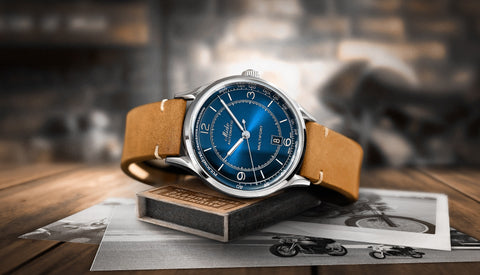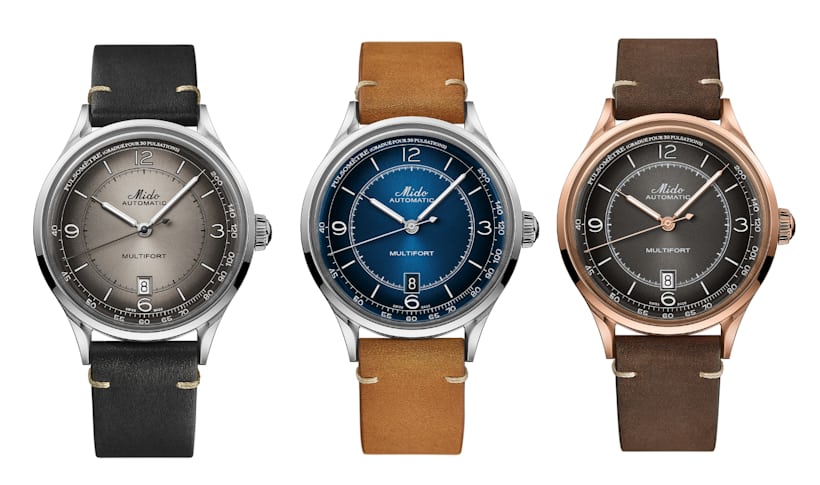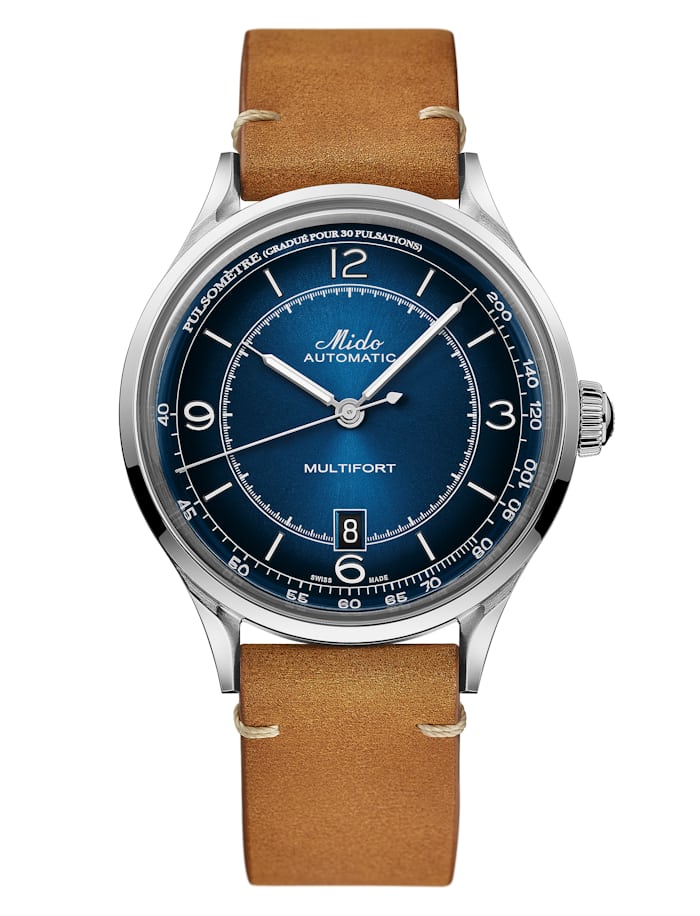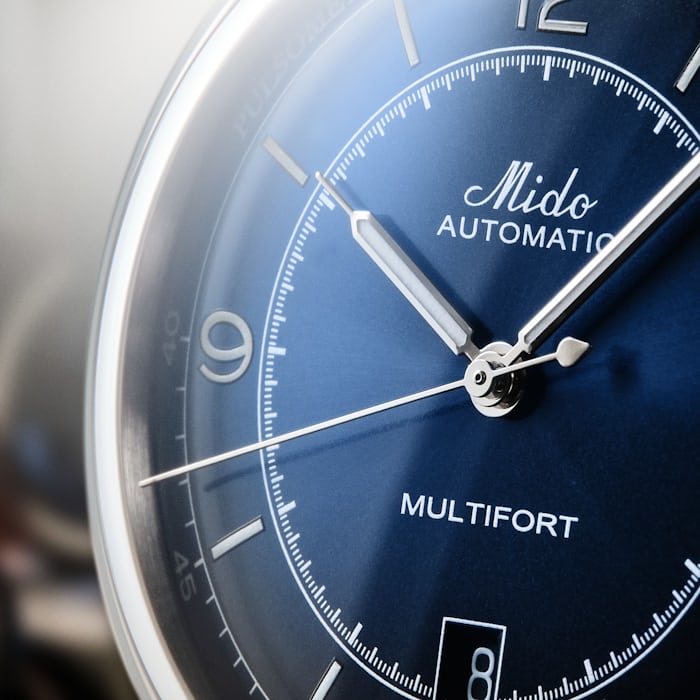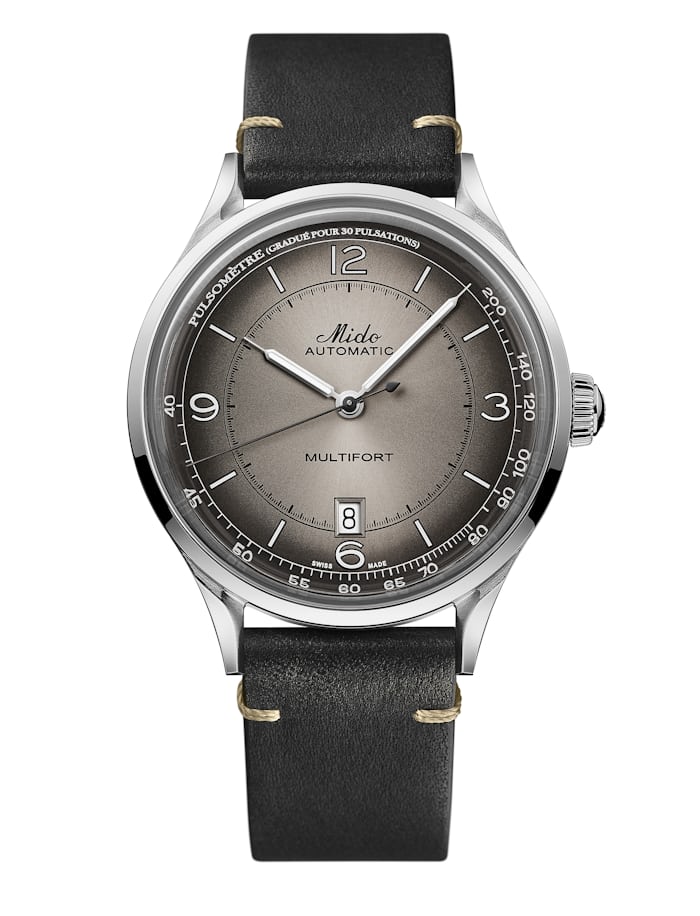An old-school style watch, a solid movement, and a pleasingly accessible price
There is much to be said both for and against the trend in recent years to make watches inspired by, or derived directly from, vintage watches. While not every such watch is a hit, they often have the odds stacked in their favor in that at the very least, they give a sense of connection to the history of wristwatch design and development, rather than going for a novelty effect that will soon wear thin.
Drawing from the vintage design cue playbook, the latest from Mido is the Multifort Patrimony, which features a box sapphire crystal, syringe hands, and a pulsometric scale, and which also has a very respectable (especially at this price point) movement: the Mido caliber 80 (ETA C07.621 base) with an 80 hour power reserve. At launch, it'll be available in stainless steel, with either a blue or anthracite dial, and also in gold PVD, with a black dial.
Initial Thoughts
Like a lot of Mido's current and recent watches (which can rise to the level of Vaue Proposition-worthy) the Patrimony offers an attractive design, solidly rooted in the unobtrusive classicism of the mid-20th century, with no unnecessary frills and a decent amount of added value in terms of the movement.
The staple Mido caliber 80 (which is available, depending on the watch, in both COSC and non-COSC versions) is exactly what you would hope for from a brand in the very difficult sub-RM 4,000 price range – it's not in-house, but it's not pretending to be, and even the most basic version offers a power reserve which would have been pretty major news in a large production volume movement not that long ago (roughly double the power reserve of a standard ETA 2892-A2, for comparison) in a pretty compact package.
At 40mm x 11.95mm, this isn't the inside-baseball vintage purist's 38mm ideal (if there is such a thing) but it gives the impression of a watch intended to appeal to someone who already knows something about watches but doesn't necessarily want to take out a life insurance policy, fake their own death, and flee the country under an assumed name with – oh, I don't know, a Patek 5170G, if you want a pulsometer scale (okay, the Patek is a chronograph, but you get the idea).
There are really only two possible quibbles with the Mido Multifort Patrimony that I can think of – one has to do with that pulsometer scale and the other has to do with the gold PVD case. The pulsometer is usually paired with a chronograph, with which it's arguably slightly more useful (on the assumption you are going to find a pulsometer scale useful at all) as you don't have to wait for the seconds hand to hit the 12:00 mark to begin counting pulse beats.
On the other hand, the worst case scenario is that you would have to wait 59 seconds before starting your count of 30 pulsations, so you're not losing all that much for the same functionality, and you're paying quite a bit less than if you wanted a chronograph along with the pulsations scale (there is some historical precedent as well in that non-chronograph watches have been made in the past with pulsometer scales – maybe for those hardscrabble years when you're first out of med school and those student loans are really coming home to roost).
Modern PVD gold-colored coatings are in general much more durable than those of us who remember cheap gold-electroplate watch cases from I-don't-want-to-say-when-because-I'm-stressed-about-getting-old. The modern standard for PVD coatings is generally titanium nitride, which is an extremely hard, very wear resistant material (technically, it's an industrial ceramic) that should last for the life of the watch. It might bother those of us who resist ersatz gold in any form but at this point in the history of watches and materials science, it honestly feels less to me like fake gold than real PVD.

